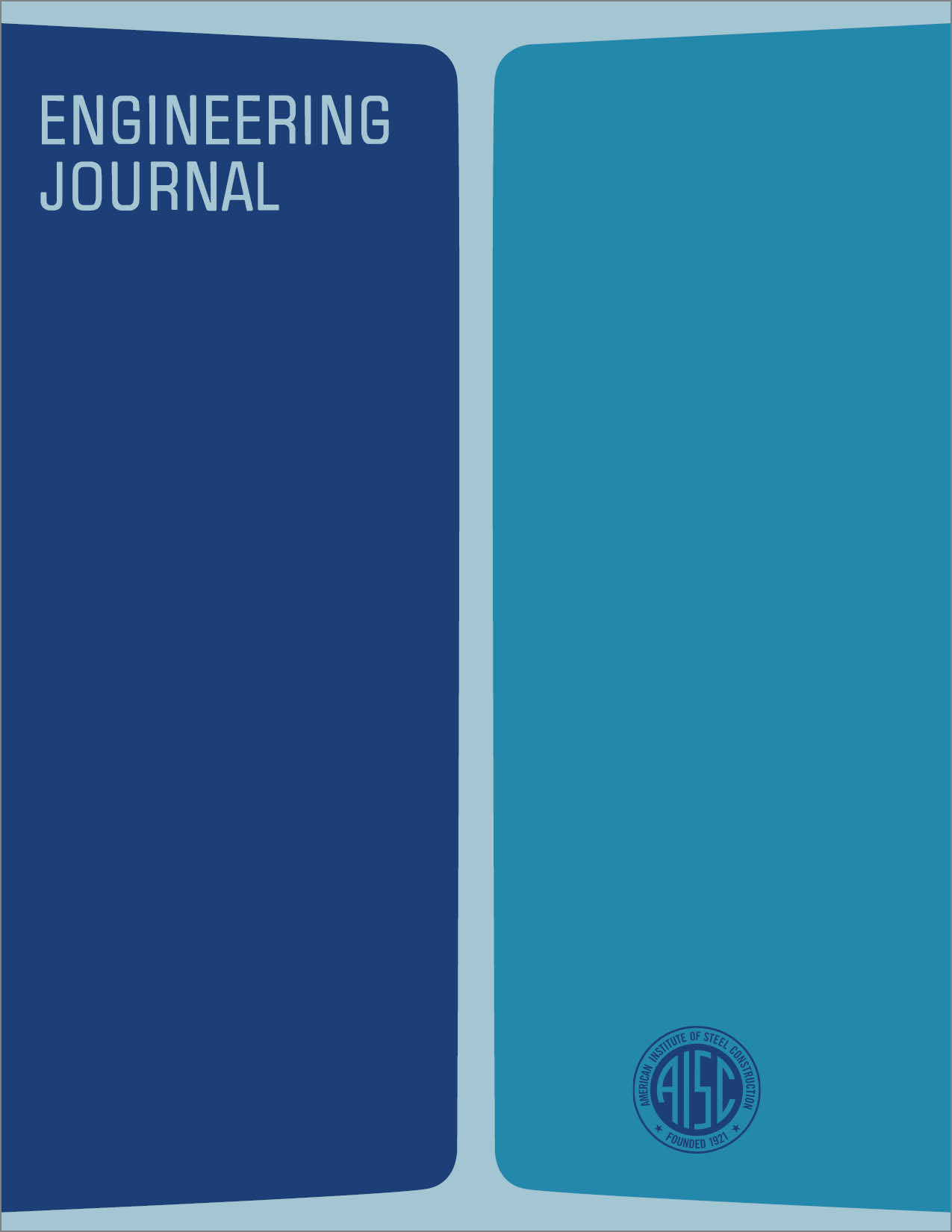Vertically Curved Girder Flanges
DOI:
https://doi.org/10.62913/engj.v21i1.411Abstract
Flange plates in steel girders are sometimes bent or curved in the vertical plane to accommodate changes in girder depth. For example, this detail occurs frequently in continuous-span bridge girders that are haunched to provide additional depth at the interior supports, as indicated in Fig. 1. The bottom flange of the girder in Fig. 1 is curved in the vertical plane at each transition between the horizontal and sloping configuration. Curves in flange plates are also common in steel pier bents and other kinds of bridge and heavy building construction (a few examples are sketched in Fig. 11). Most designers recognize that a bend or out-of-plane curve in a flange plate, in conjunction with longitudinal tension or compression in the plate, will give rise to out-of plane (nominally vertical) forces in the flange that will, in turn, produce transverse flexural stresses in the plate. Rigorous three-dimensional elastic analysis of the cylindrically curved plate is much too complicated to be attempted in most real design-office situations. Consequently, transverse flexure of the plate and the possible reduction in effectiveness of the flange are seldom considered in any rational manner, even in the design of very large structures. Simple procedures for evaluating the effectiveness or efficiency of vertically curved flange plates will be developed in this paper. Conditions in the elastic range and at ultimate will be studied separately.

